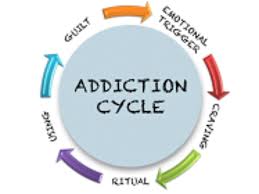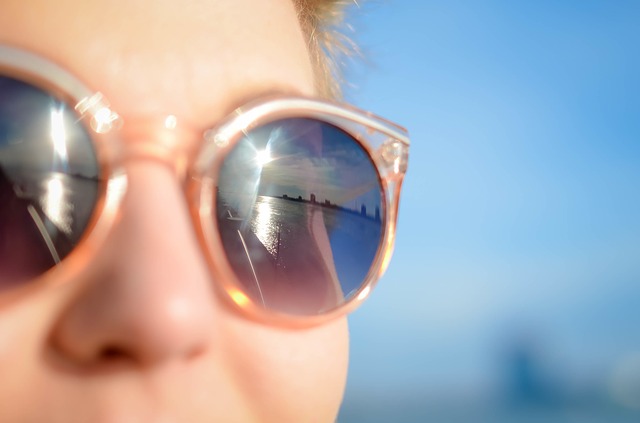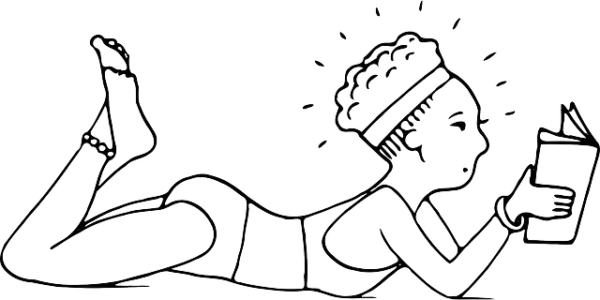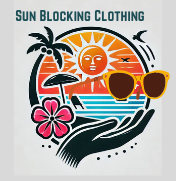Understanding the psychological cycle of tanning addiction can be a step in helping a loved one. However. it may trigger a denial.
To assist someone addicted to tanning, approach the issue with empathy. Encourage open communication, and consider professional help or support groups.

I know I don’t feel comfortable confronting a loved one who feels a tan is worth all the risk they are taking. So, let’s look at this, a behavioral addiction to get some of the facts clear to ourselves. Make us more able to be supportive of those who are addicted, as they get help.
The obvious question is, “What is tanning addiction?”
What Is Tanning Addiction?
Tanning addiction is the strong and uncontrollable desire to get and keep a tan.
To maintain their tan, individuals with this addiction tan excessively, risking their skin health with frequent and prolonged exposure to UV radiation.
Whether under the sun or in a tanning salon, they persist in tanning to either deepen their tan or prolong its duration.
Recognizing addictive behavior involves understanding the psychological cycle of tanning addiction.
While the damage to the skin is visible, the hidden layers of why someone continues this harmful behavior are not immediately apparent.
When you realize that you or your loved one is behaving in an addictive manner, you will need to be able to understand the psychological cycle of tanning addiction.

Understanding
Understanding the psychological cycle of tanning addiction is crucial for you to be able to offer effective support
Before offering solutions, it’s important to provide support, especially if you’re not a professional in treating behavioral addiction.
Pay attention to where individuals are coming from. Listen and understand the underlying behavioral patterns, triggers, and emotional aspects involved.
Everyone I asked about how to approach the tanning addiction talk warned me. Understanding the challenges faced by those addicted to tanning before offering guidance on positive changes is the most important part of help.
This warning is what led me to dig deeper into the subject of tanning addiction.
The importance of understanding the psychological cycle of tanning addiction may seem to be a no-brainer. However, I have trouble understanding without being patronizing. How about you?
Understanding the psychological aspects of tan addiction is crucial in providing effective support. And support must come before offering solutions.
Understanding the psychological cycle of tanning addiction is essential for offering effective support.
As a non-professional in behavioral addiction, prioritizing empathetic support before suggesting solutions is crucial.
Prioritize support over solutions, especially when dealing with a sensitive issue like tanning addiction.
As someone not trained in behavioral addiction treatment, it’s essential to focus on self-support before offering guidance.
Ensure a deep understanding of individuals’ experiences and the underlying factors before suggesting help.
Acknowledge the complexity of tanning addiction and strive to initiate positive changes with empathy.
Behavioral Patterns
To be able to help a loved one who has a tanning addiction, being aware of the common signs is how you can recognize troubling behavior.
Are There Excessive Tanning Activities? Like:
- Spending significant time getting tan in tanning beds.
- Frequent visits to tanning salons on the sly?
- Obvious signs of too much tan? ( very tanned skin)
What about an Obsession with Maintaining a Tan?
- Prioritizing tanning over other responsibilities.
- Neglecting commitments to indulge in tanning activities.
Is There a Preoccupation with Appearance?
- Strong emphasis on achieving and maintaining a specific skin color.
- Continuous focus on personal appearance.
Have you Noticed Some Restlessness and Irritability?
- Feeling restless or irritable when unable to tan.
- Actively seeking opportunities to tan, even in inappropriate or unsafe circumstances.
Risk Ignorance Like A General Exceeding Healthy Limits?
- Continuing tanning despite negative consequences (e.g., skin damage, premature aging, increased risk of skin cancer).
Recognizing these behavioral patterns is crucial in identifying and addressing tanning addiction, even if the cycle involves oneself.
Understanding the cycle of tanning addiction involves recognizing common behavioral patterns. The Sydney Morning Herald shared the story of Trisha Paytas, a YouTube star, who sought medical advice for her tanning addiction before fame.
YouTube share from The Sydney Morning Herald
Individuals with a tanning addiction may continue tanning despite experiencing negative consequences such as skin damage, premature aging, or an increased risk of skin cancer.

Emotional Impact of Tanning Addiction
The emotional aspects of tanning addiction are a mystery to me.
I have never been very tuned in to my emotional side. So I am never in control of my emotions as I want to be.
My emotions are occasionally taking me for a ride someplace I didn’t want to go. Are you aware of how your emotions drive you?
As I am exploring how tan addiction can serve as a coping mechanism for emotional distress or low self-esteem, I realize that we all are vernable to some kind of addiction.
So, the relationship between tanning addiction and our dissatisfaction with how we see our body. This one is beginning to make me aware of the dangers of becoming addicted.
Tanning is so dangerous and is what we are digging into now. However, the complexity of addictions is not a simple fix.
Just taking a minute to apply this to myself while reading and researching tanning addictions, I realized that emotions are deeply ingrained. If we are reacting from habit, we may not always recognize them as triggers.
While it may be easier to recognize this emotional trigger in others, can we see it in ourselves?
Is tanning triggered by something as trivial as your annual report at work?
Or even just knowing you are approaching report time, not even the evaluation of your work itself? Vacation time? Holiday time?
What are your triggers?

The Role Of Self-Esteem
How does the role of self-esteem, body image, and perfectionism work in tanning addiction?
We believe what we tell ourselves about our self-esteem or our self-worth. If we tell ourselves we will look better or people will like us better because we are tanned, we will soon become tanning addicted.
Come on, now. Are you more handsome because you are tan? Can you run faster just because you are tanned? Is your bank balance larger because you are tan?
Do people like you because you are tan?
Maybe you may have a higher risk of skin cancer because you are tan, but being high risk does not improve your self-esteem.
A tan may make you, in your addicted state, think you are more important, more attractive, or more popular.
But out here in the real world where risks are also considered in the equation, you will find being tan makes no difference.
You, in your mind, have allowed the idea that tanning is the only way you can have a happy life. This isn’t true, just because you think it!
The cycle of tanning addiction will continue to lead you to take more risks.
Are you beginning to understand how low self-esteem, negative body image, and perfectionistic tendencies work? How these separate parts of you can contribute to the development and maintenance of tanning addiction?
The way we feel about ourselves is important, but, it is important to make sure these “feelings” are based on fact.
Coping Strategies
Having some coping strategies to address those underlying emotional issues is where we start to do away with tanning addictions.
Breaking the cycle will require self-reflection in recognizing and admitting tan addiction.
Encouraging individuals, as well as ourselves to engage in introspection.
Are you comfortable when looking at your behaviors and what causes you to act as you do?
Does self-assessment recognize the negative impact of tanning addiction on your life and encourage positive action?
Are you reluctant to look at what you do and why? Or is this not easy for you to do?

Negative Consequences Of Excessive Tanning
Will providing information about the potential health risks associated with tanning, make a difference? Does the warning from the dermatologist about too much sun change how you do things?
Is warning people about the dangers of skin cancer, premature aging, and other dermatological issues. the way we should go?
Would seeing more pictures of skin cancers cause awareness to cause positive change?
What would it take to make you change your activities? What would cause you to protect your skin from the sun?
Are we so determined to keep our tans that we just aren’t going to change? Do you recognize the personality of a tanning addict in yourself?
Addiction Recovery
How do we go about seeking professional help and support for tan addiction recovery?
Reading about addiction to tanning and becoming aware of the warning signs of a serious problem is a step in the right direction.
Naturally earlier is better in the life of an addicted person to make change.
Look at yourself, would you give up the time in the sun for healthier skin? Your answer is probably connected to your age. The older you are, the wiser you get about the danger of too much sun.
However, if your damage has been minimal, and you think you have had no real damage, would you stop tanning?
Or is it worth the risk to you? These questions make us aware that it is important to get help from people who know how to help.
Emphasizing the importance of seeking professional assistance from therapists, counselors, or addiction specialists. These are the people who can provide guidance and support throughout the recovery process.
I may be able to help you become aware of a problem, but I am not a fixer. My purpose is to help make you aware. Help make you think.
Support System Awareness
Do you understand loved one’s roles in addiction recovery?
Starting with educating family and friends about tan addiction and its psychological aspects. We can help if we know how. That is why I do this research. I want to know how to help others in this addition.
We can help them find information and resources so they better understand the complexities of tan addiction.
By encouraging open and non-judgmental communication we can encourage others. Are you able to be open and non-judgemental? I don’t know just how well I can be non-judgemental!
It is very important to have a safe and supportive environment. Where tanning-addicted individuals feel comfortable discussing their struggles without fear of judgment or criticism.
There are treatment options, and support groups that can help in the recovery journey.

How Do We Empower Change?
I don’t know about you, but I think I am more prepared to help tanning-addicted individuals seek help and make changes.
However, being more aware does not mean I have learned all I need to learn about this problem for our skin.
Helping people understand and accept themselves in a healthy untanned way is a complex situation. I can raise awareness, but I can’t cure it.
But I can, and will continue to promote self-acceptance. As well as a healthy body image.
When it comes to encouraging tanning-addicted individuals to cultivate self-acceptance, I can help with awareness. Some of us find it difficult to embrace our natural skin tone. We want what we want, and for some, it is a tan body.
Learning to accept us as we are when we are young, and foster a positive body image. This is something all family and loved ones should do. How good are we doing with this part?
Do you think your words are falling on deaf ears when you make remarks about someone’s body shape, size, or color?
Often negative body image remarks are a part of our everyday language. We don’t think about it, we just say it.
Evaluating our everyday language can make you more aware. If you will improve this daily language, maybe you can be there when a loved one needs you.
Practical Strategies
Practical strategies put us back in the professional hands to provide tools and strategies for managing triggers and building resilience.
We are all familiar with the idea of changing good behavior for bad. However, finding the actual helpful way to change a good habit may be another thing.
Practical strategies, such as stress management techniques, and finding alternative activities, are important for the addict’s recovery.
Often the habit we are breaking is better than the one we are trying to substitute in place of.
Finding trained professional help is a game changer for helping a person addicted to tanning break the cycle of tanning addiction.
Developing a support network seems to be a basic part of kicking an addiction. We all need an encouraging word or a place where we feel safe from judgment.
That is why it is important to examine our daily language and how we express ourselves. Create an environment for recovering tanning addicts to thrive and do well as they leave tanning addiction behind.
References Consulted
This list is where part of the information I used for this article came from. Checking out these sites can give you more information if you are curious.
American Academy of Dermatology (AAD): The AAD provides comprehensive information on various dermatological conditions, including tanning addiction. You can visit their official website
National Institute on Drug Abuse (NIDA): NIDA primarily focuses on substance abuse and addiction, but it also covers behavioral addictions. You can find useful information on addiction, including tanorexia, on their website
Skin Cancer Foundation: The Skin Cancer Foundation is a leading organization dedicated to promoting skin health and raising awareness about skin cancer. They provide valuable information on the risks of excessive tanning and related behavioral patterns. Visit their website
Remember to critically evaluate the information you find and consult multiple reputable sources to ensure a comprehensive understanding of the topic.

Sami’s Take on Understanding “The Physiological Cycle of Tanning Addiction”
Tanning addiction is not a one-time and done thing. Nor is it a one-size-fits-all.
However, tanning addiction is a real thing, and to help our loved ones find their way out, we may need professional help.
Often our concern is brushed aside, and disregarded. Understand that this is a part of the cycle of behavioral addictions. Tanning was accepted and approved until the unrepairable damage showed up.
With the huge databases that are possible today for research, it has been proven over and over again.
Too much sun exposure is dangerous for your skin’s health. The tan you thought was so healthy? It is just setting your skin up for skin cancer.
Don’t let addiction run your life. Let a healthy mindset be in control.
Thank you for reading,
Sami
